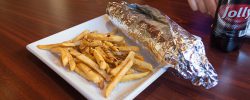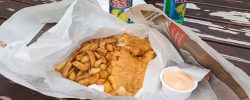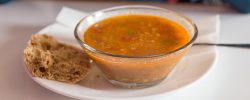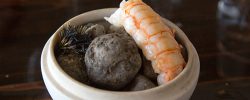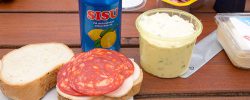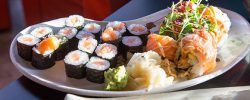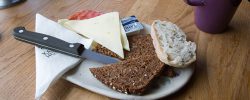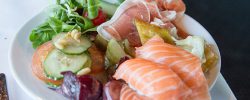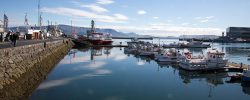Big Stan Pizza and Grill (Klaksvik, Faroe Islands)
Our next excursion in the Faroe Islands was taking a ferry to the Island of Kalsoy. A rugged, steep island in the middle of the Northern Faroes, Kalsoy is lightly populated and is one of the more picturesque locations, with a series of idyllic valleys (connected by even more tunnels), and the stunningly cute village of Trøllanes on the north end. It’s also the locale for a phenomenally scenic hike, the hike from Trøllanes up to Kallur Lighthouse, where you get a stunning panorama of five islands (Viðoy, Kunoy, Kalsoy itself, Eysturoy, and Streymoy). This was one of the finest views I’ve had anywhere (and one of the most-photographed views of the Faroes). Afterward, we took the ferry back to Klaksvik, the second-largest city in the Faroes. While it’s a sizeable settlement, and definitely more of a “city” than most of the little villages, the options are still a bit limited for restaurants, with the choices being listed on one hand. After enjoying a pair of beers at Roykstovan (a charming little pub just down from the Föroya Bjór brewery), their menu mostly focuses on burgers, and we were wanting something different. So instead we walked a block down the street, finding Big Stan Pizza and Grill.

